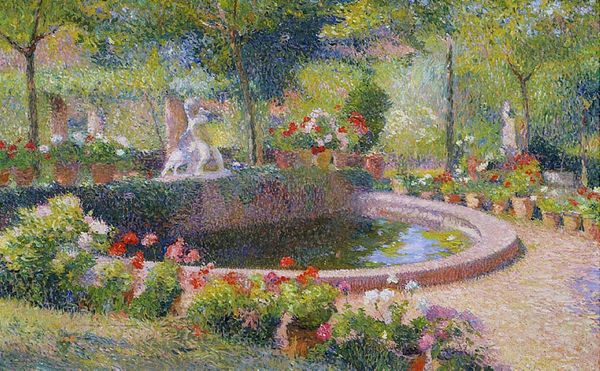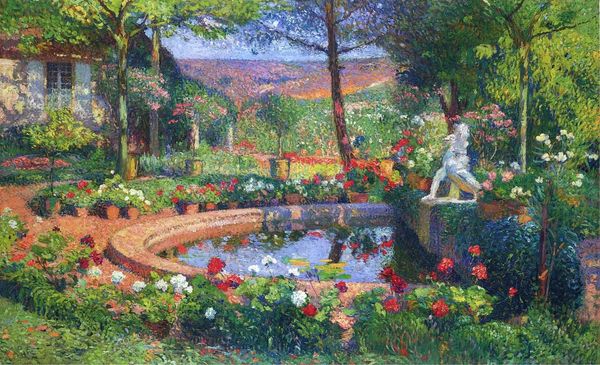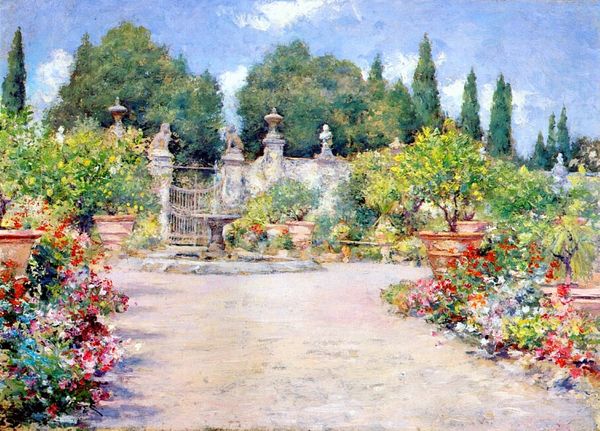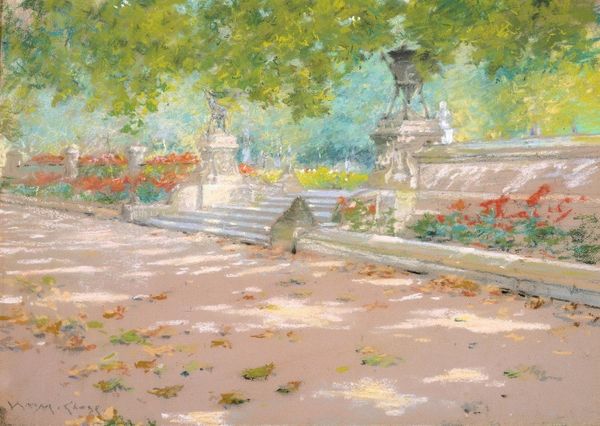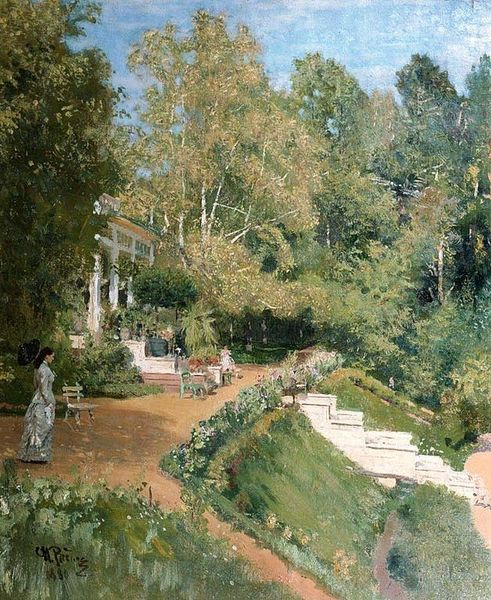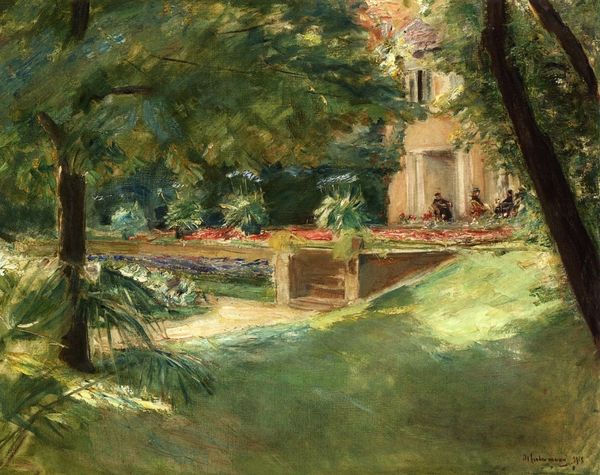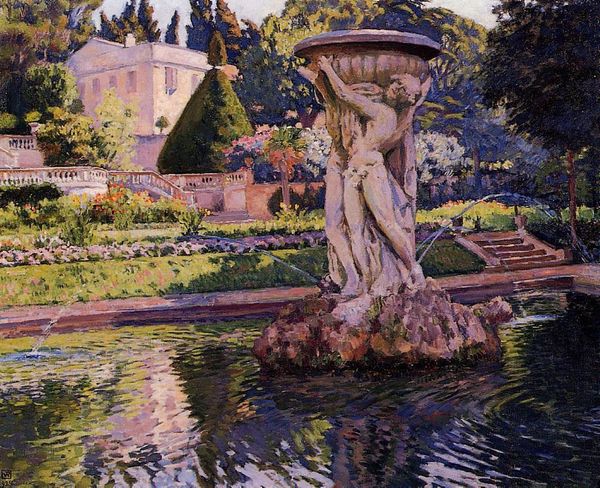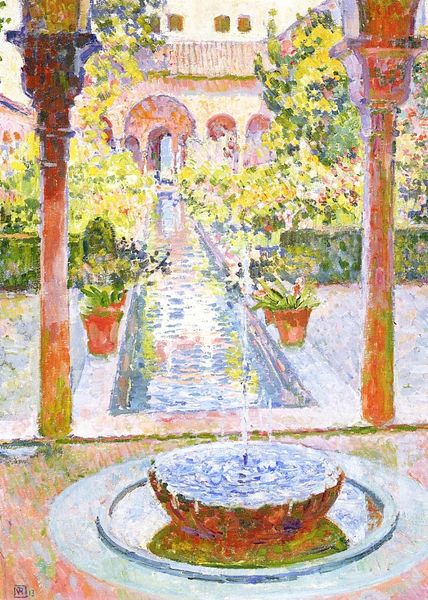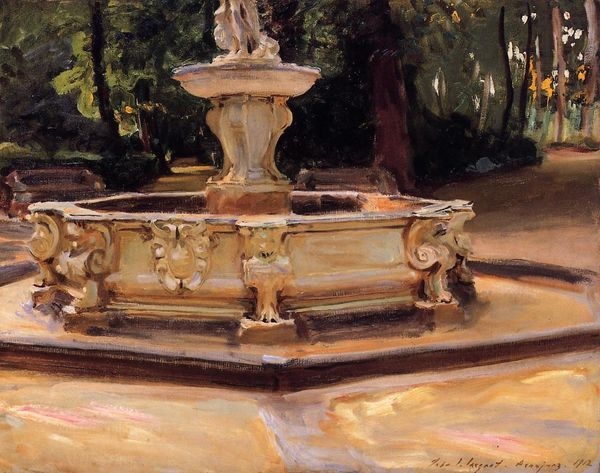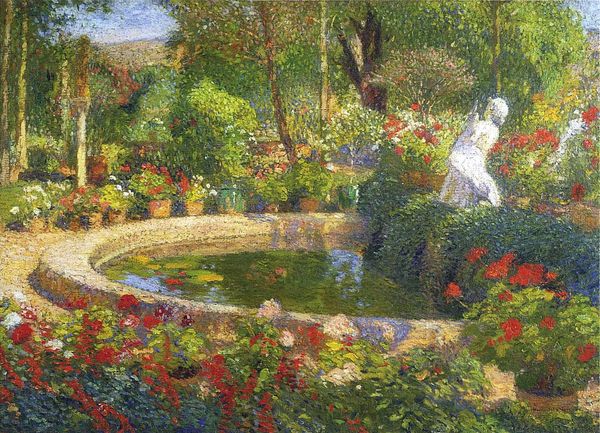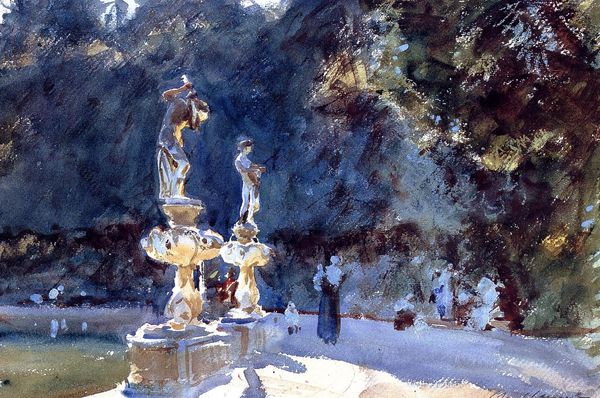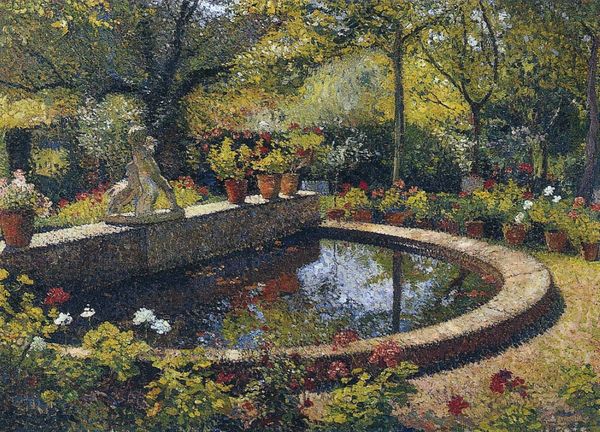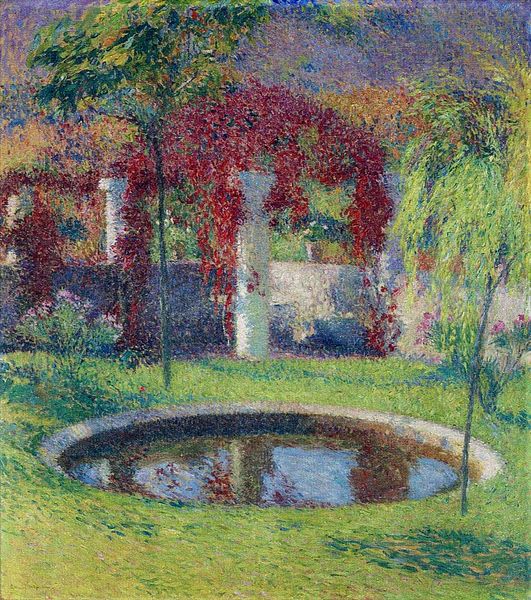
#
tree
#
garden
#
abstract painting
#
impressionist painting style
#
flower
#
leaf
#
impressionist landscape
#
oil painting
#
street graffiti
#
forest
#
landscape photography
#
plant
#
seascape
#
naive art
#
park
#
botany
#
natural environment
#
watercolor
Copyright: Public domain
Curator: Here we have William Merritt Chase’s "Prospect Park," painted in 1886. It’s currently held in a private collection. Editor: Oh, it's giving me instant Sunday afternoon vibes! Calm, but also kind of opulent, like a Gilded Age picnic blanket. What's with the light? It's practically liquid! Curator: Well, consider the cultural context. The late 19th century saw increasing urbanization and industrialization, leading to a renewed interest in nature and public spaces. Parks like Prospect Park became crucial sites for social interaction and respite from urban life, specifically marketed as democratic spaces, but ultimately coded for some and not for others. Editor: So, painting that shimmering light and all those pretty flowers wasn't just about capturing beauty; it was about who had access to that beauty, right? It does feel a little... curated, you know? Curator: Precisely. And chase uses those heavy, almost monumental planters in the immediate foreground to add both structure and layers of depth, literally creating spatial obstacles. Notice also the fashionable attire of the lone figure in the distance, set apart and seemingly unapproachable behind floral ornamentation. This reflects how public parks like Prospect could simultaneously project democratic ideals and subtly reinforce social divisions along class lines. Editor: So those weren't just pretty flowers; they're coded anxieties about class! All of a sudden, this park path feels a lot longer and less inviting. The brushstrokes do look looser toward the back. Curator: Indeed. Chase uses impressionistic techniques—broken brushwork, emphasis on light and color—to convey a specific impression of leisure and bourgeois comfort while simultaneously emphasizing the inherent, even designed inaccessibility to those spaces and lifestyles. This wasn’t accidental but intentional, tied up within power dynamics. Editor: Huh. I’ll never look at a landscape painting the same way again. What seemed so effortlessly pretty is…loaded. Now that's a true conversation with a painting, because the landscape started talking back. Curator: Exactly. And I think Chase is pushing us to really consider, or perhaps reconsider the historical narratives inherent in such works of art and the visual experiences that are part of our collective history.
Comments
No comments
Be the first to comment and join the conversation on the ultimate creative platform.
